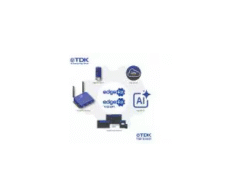The 2025 Threat Landscape
Cybersecurity experts are observing a concerning surge in cyberattacks throughout 2025, specifically targeting PHP servers, Internet of Things (IoT) devices, and cloud gateways. This escalation is largely attributed to persistent activity from notorious botnets including Mirai, Gafgyt, and Mozi, which exploit known Common Vulnerabilities and Exposures (CVEs) and misconfigured cloud environments to expand their reach.
The confluence of widespread PHP usage powering approximately 77% of websites with server-side programming language statistics, combined with increasing cloud misconfigurations, dramatically amplifies the digital attack surface. This creates significant challenges for organizations worldwide attempting to defend against increasingly sophisticated threat actors.
PHP Applications: Prime Targets
The digital landscape continues evolving, and threat actors adapt alongside it. With PHP powering a substantial portion of the web, PHP-based applications such as WordPress—which runs over 40% of all websites—remain prime targets for attackers seeking remote code execution (RCE) or opportunities for data theft.
Why PHP Servers Are Vulnerable
- Widespread Deployment: Massive installed base creates large target pool
- Legacy Code: Older applications running outdated PHP versions
- Framework Vulnerabilities: Popular frameworks like Laravel and ThinkPHP contain exploitable flaws
- Misconfiguration: Development tools left active in production environments
IoT Devices: The Expanding Attack Surface
The pervasive presence of IoT devices in both personal and professional settings creates a vast network of potential entry points for malicious actors. Routers and IoT devices, once primarily targeted for large-scale DDoS attacks, now play crucial roles in credential stuffing and password spraying campaigns.
Expert Analysis
According to James Maude, Field CTO at BeyondTrust:
“Access to vast networks of compromised routers allows attackers to perform large-scale credential stuffing and password spraying campaigns.”
The vulnerabilities in these devices often stem from default usernames and passwords—a security weakness that echoes the early days of the Mirai botnet, which famously compromised hundreds of thousands of IoT devices in 2016.
IoT Attack Vectors
- Default Credentials: Unchanged factory passwords enable easy access
- Firmware Vulnerabilities: Unpatched security flaws in device software
- Weak Authentication: Inadequate access controls
- Network Exposure: Devices exposed directly to internet without proper segmentation
Critical Vulnerabilities Being Exploited
Several vulnerabilities are currently being exploited in the wild, demanding immediate attention from security teams. These include flaws in widely used software and frameworks, coupled with insecure configurations that expose sensitive data.
PHP Framework Vulnerabilities
- CVE-2022-47945: RCE flaw in ThinkPHP due to improper input sanitization allowing arbitrary code execution
- CVE-2021-3129: Laravel Ignition debugging route left active in production enabling remote code execution
- CVE-2017-9841: Long-standing PHPUnit flaw exposing the eval-stdin.php script for code injection
IoT Device Vulnerabilities
- CVE-2024-3721: TBK DVR command injection flaw actively exploited by botnets
- MVPower DVR Backdoors: Built-in backdoors in surveillance systems enabling unauthorized access
Cloud Gateway Vulnerabilities
- CVE-2022-22947: Spring Cloud Gateway vulnerability allowing unauthenticated code execution in cloud-native environments
Cloud Configuration Risks
Cloud-native environments face increasing risk, particularly due to rapid deployment cycles that outpace security validation. Attackers actively exploit insecure configurations such as:
- Active Debugging Tools: XDebug and similar tools left enabled in production
- Exposed Secrets: Improperly stored credentials and API keys
- AWS Credential Files: Qualys researchers report frequent attempts to retrieve sensitive Amazon Web Services credential files from exposed Linux servers
- Overly Permissive Access: IAM policies granting excessive permissions
The Speed Problem
Trey Ford, Chief Strategy and Trust Officer at Bugcrowd, emphasizes the visibility and change management challenges in modern cloud environments:
“In the age of modern cloud-native and infrastructure as code, developers have the ability to both light up and connect services and infrastructure faster than security teams can identify it. Staying current with your attack surface is a critical path capability.”
Defense Strategy: Risk-Based Vulnerability Management
To effectively defend against these evolving threats, organizations must adopt proactive and multifaceted security approaches. Traditional vulnerability management—attempting to patch everything—proves inadequate given the volume of disclosed vulnerabilities.
Risk-Based Vulnerability Management (RBVM)
According to Scott Schneider, Partner GTM at iCOUNTER, RBVM enables organizations to “focus their remediation efforts on the vulnerabilities that present the most immediate and serious risks” by assessing threat likelihood and exposure context.
RBVM Implementation
- Threat Intelligence Integration: Combine vulnerability data with active exploitation intelligence
- Asset Criticality Assessment: Prioritize based on business impact
- Exposure Analysis: Understand which systems are internet-facing
- Exploit Availability: Factor in publicly available exploit code
Recommended Security Measures
To reduce exposure to these escalating threats, security experts recommend comprehensive defensive measures:
Patching and Updates
- Timely Patching: Apply security updates to software and frameworks within defined SLAs
- Automated Patch Management: Implement tools for tracking and deploying patches
- Version Currency: Maintain supported versions of PHP, frameworks, and dependencies
Configuration Hardening
- Disable Development Tools: Remove debugging and development utilities from production
- Secrets Management: Use managed secret stores (AWS Secrets Manager, Azure Key Vault) rather than plaintext files
- Principle of Least Privilege: Grant minimum necessary permissions
- Network Segmentation: Restrict access to essential IPs only
Monitoring and Detection
- Cloud Access Logs: Monitor for credential misuse and anomalous access patterns
- Intrusion Detection: Implement IDS/IPS to identify exploitation attempts
- Behavioral Analytics: Establish baselines and alert on deviations
- Vulnerability Scanning: Regular automated scans of infrastructure
IoT Security Specific
- Change Default Credentials: Immediately upon deployment
- Firmware Updates: Establish process for IoT device patching
- Network Isolation: Segment IoT devices from critical systems
- Inventory Management: Maintain complete IoT device inventory
The Democratization of Hacking
With widely available exploit kits and scanning tools such as Shodan, Censys, and automated exploitation frameworks, even less experienced attackers can inflict significant damage. This “democratization of hacking” lowers the barrier to entry for cybercrime, increasing the volume and frequency of attacks organizations face.
Implications
- Higher Attack Volume: More threat actors can participate in attacks
- Faster Exploitation: Automated tools accelerate time-to-exploit after vulnerability disclosure
- Broader Targeting: Even small organizations face sophisticated attack techniques
Continuous Security Imperative
To counter evolving threats, organizations must adopt continuous visibility and automated remediation to defend PHP servers, IoT devices, and cloud systems from ongoing exploitation. The traditional model of periodic security assessments proves inadequate in environments where infrastructure changes occur continuously.
Continuous Security Requirements
- Real-Time Asset Discovery: Automatically identify new infrastructure as it’s deployed
- Continuous Vulnerability Assessment: Ongoing scanning rather than point-in-time
- Automated Response: Programmatic remediation where possible
- Integrated DevSecOps: Security built into CI/CD pipelines





